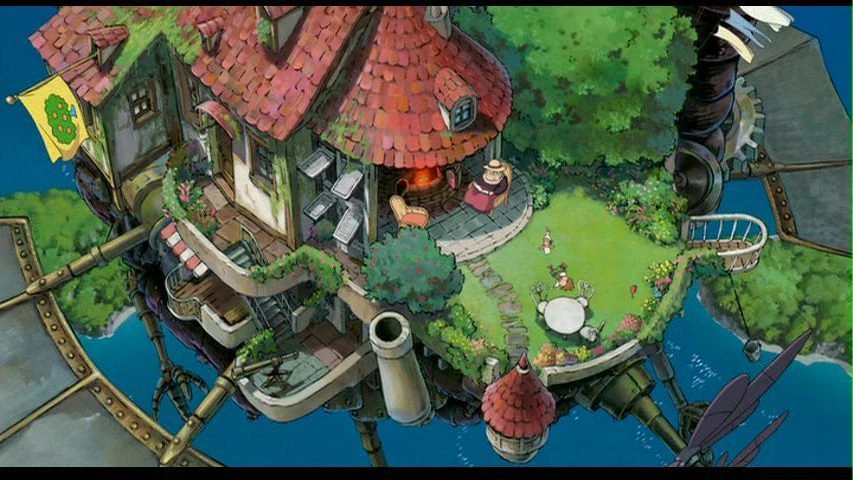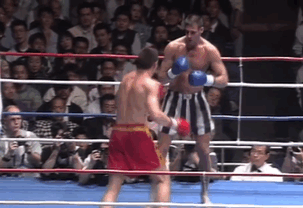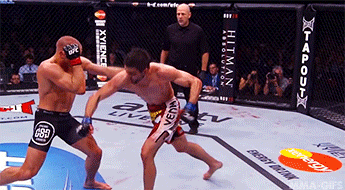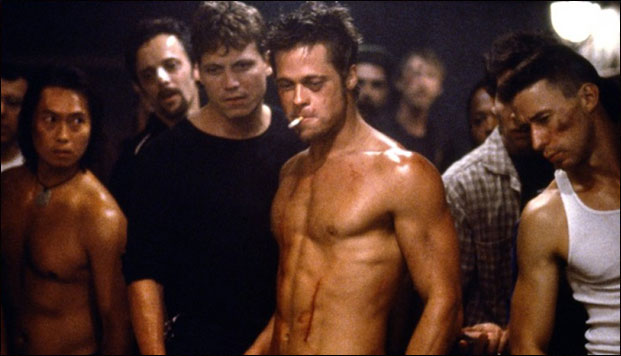
Upon rewatch, I was reminded Howl's Moving Castle is just your run of the mill "female protagonist lives life for others, protagonist meets boy, boy turns out to be wizard, jealous witch turns protagonist into an old woman, protagonist meets turnip scarecrow and sassy flame demon, protagonist and wizard team up to avert war and rescue people and other living creatures along the way" story. Pretty standard stuff, really.
There's a lot to love about his movies. The beautiful, imaginative worlds he creates; the relaxed but confident pacing that is never afraid to take a moment to breath, rather than constantly charge forward; the recurring motifs of respecting nature, female agency, and avoiding violence. What I want to focus on here, though, is how he creates conflict in his movies.
Conflict is the force that drives the plot in most storytelling works. The idea is that the protagonist has to overcome something- be it external, internal, or both- in order to achieve what they want. Whether they desire inner peace or to rescue a loved one or to obtain a laser that fires Steve Buscemis, they face conflict in order to reach said objective(s).

With great Buscemi comes great responsibility.
In many family friendly films, the conflict is driven by an antagonist who is clearly, unambiguously bad. From the Wicked Queen in Snow White to Scar in Lion King, kid's movies often feature villains who are so pointlessly evil that they probably do the five finger shuffle to the thought of drowning innocent puppies and kittens. At first thought, it makes sense: making easy to understand distinctions between good and bad help give children a clear picture of positive versus negative morality as they build their own moral foundation during their formative years.
Obviously, though, the problem lies in the fact that real life is rarely that simple. Apathy, fear, greed, anger, and weakness are responsible for a lot more problems in the world than "evil" is, if such a thing even exists. But when kids are still forming their own base concept of right vs wrong, are they able to handle a more nuanced approach in the way antagonists and conflict are portrayed? Hayao Miyazaki's answer would be an unequivocal "fuck yes", and his films are all the better for it.
Many of Hayao Miyazaki's antagonists, rather than being evil for the sake of being evil, are people, spirits, and creatures that have clear, understandable reasons behind what they do. Sometimes they do things that are bad for sympathetic or otherwise non-malicious reasons; sometimes their actions cause harm unintentionally. Some of his movies don't even have actual "antagonist" characters, and conflict is derived from internal struggle or external environmental factors.
Here I will go through some of the movies of his I've seen to illustrate different ways he creates conflict in his films. There are, obviously, spoilers ahead.
Nausicaa of the Valley of the Wind

Often considered Hayao Miyazaki's first Studio Ghibli film and my personal favorite of his, Nausicaa tells the story of the titular character and her struggle to prevent war and save her homeland in the Valley of the Wind. She does so in a world ravaged by an apocalyptic war that happened a thousand years prior to the start of the movie. The majority of the earth is now covered in a toxic jungle, which is guarded by giant insect creatures called ohmu.
Everything kicks off when an airship from the Kingdom of Tolmekia crashes in the Valley of the Wind. The airship carried both the captured princess of the Tolmekian's rival kingdom, the Pejites, and the embryo of a Giant Warrior, which were genetically engineered biological weapons that helped cause the apocalyptic war. The Tolmekians invade the next morning and occupy the Valley of the Wind while they try to raise the Giant Warrior, hoping they will be able to defeat the Pejites and destroy the Toxic Jungle. When the Pejites find out that the Tolmekians are in the Valley, they lure a stampede of ohmu there to wipe them out in an act of revenge.
What's important to note about the conflict in this movie is that the motivations the movie gives each group makes sense. The Pejites and Tolmekians fight each other not because one side is clearly good while the other is evil, but rather because of a tragic escalation of violence, fear, and hatred that has arisen between the two. Likewise, the desire of the Tolmekians to use the Giant Warrior against the Toxic Forrest isn't some evil plot for world domination, but rather a desperate quest for survival. Before Nausicaa discovers the earth is healing beneath the Toxic Forrest, everyone- even the residents of the Valley of the Wind- fear desperately for their own survival in such a hostile environment. The move is a rash one by people desperate to cling to life, not by an unambiguously "evil" group of people.
In the end, Nausicaa is able to solve the conflict by resisting violence and embracing a calm, healing approach. When she stops the stampede of ohmu by bringing back the kidnapped ohm baby the Pejites used to lure them there, she is almost trampled to death, but the ohms heal her to reciprocate her own healing means she has stuck by throughout the film. After violence is averted and she tells the people about the healing forest, the fighting stops because all the desperation and fear driving everyone's actions up to that point are eased. Not only do the ohmu and Tolmekians leave after the conflict, but the Pejites actually stay in the Valley of the Wind to help them rebuild.
The main ideas behind the entire movie are actually summed up by one seemingly small scene in the beginning, when Nausicaa first meets the fox squirrel. What happens between the two of them is basically a microcosm of the entire movie:
My Neighbor Totoro

The next movie by Miyazaki after Nausicaa, My Neighbor Totoro is a very different film. Set in relatively modern times, the story is about two sisters who move to a new home in the countryside with their father. Their mother, meanwhile, is in a hospital, being treated for a nondescript illness. The large, ambitious themes of Nausicaa are largely absent, though it is worth noting that living with nature, rather than fearing it, is still a prominent theme.
The conflict in this movie is not very overt. There certainly aren't any wars or super weapons to be found here. In his Great Movies writeup of the film, Roger Ebert even said that Totoro is "based on experience, situation and exploration--not on conflict and threat." Later on in the same article, as he describes the infamous bus stop scene, he writes: "notice how calmly and positively the scene has been handled, with the night and the forest treated as a situation, not a threat. The movie requires no villains."
There is, however, a source of conflict in the film: the girls trying to cope with the absence of their mother. Throughout the film, and especially towards the end, the girls become increasingly saddened by their mother's absence as she recovers in the hospital. The desire of these two protagonists is to spend more time with their mother, and the obstacle is her hospital stay. No conniving plots to hurt anyone else, no malicious bullying children, no adults who inexplicably hate kids unrelentingly. Just two little girls who want to see their mom again.
The rest of the film, then, could be analyzed in a number of ways. Perhaps the creatures and spirits they encounter are a product of their imagination, a coping mechanism of sorts; perhaps the creatures and spirits are real and can sense their sadness. Perhaps these creatures and spirits are real, and are willing to show up to every child who is receptive to them. Perhaps they are figments of the girls' imagination, not as a coping mechanism to make up for how much they miss their mom, but because of their love of adventure and/or nature.
Whatever the reality of this film, its reliance on adventure and imagination, rather than evil antagonists, are a unique and pleasant approach to story telling. While it doesn't give us many lessons for the ugly realities of the world we live in the way, say, Nausicaa or Princess Mononoke do, its model of story telling does still encourage a certain gentleness, curiosity, and harmony with nature, all of which are wonderful traits to encourage in children (or anyone, really).
Kiki's Delivery Service

Of the four movies we watched on my sister's birthday, I think Kiki's Delivery Service may have been my favorite. The story revolves around Kiki, a young witch from the countryside, trying to find a big city to move to so that she can train to become a witch.
Near the beginning of the movie, when Kiki is flying around with the goal of finding a city to begin her training, she runs across another young witch in training. The witch is very rude to her, but Kiki is unrelentingly kind nonetheless. Because of this, the witch- while not changing her abrasive demeanor- actually gives some helpful advice about using one's inner skills when working as a witch in training. A lesser movie would've kept her hostility and established her as an antagonist for Kiki to overcome. Here, though, Kiki shows that being nice to people often pays off.
The main conflict of this movie comes from Kiki's own insecurities about herself. When she first chooses a town to train in, she is disappointed to find out how apathetic everyone is about her arrival. The conflict comes not from people making a big deal to hurt or belittle her, but rather how little of a deal they make of it at all. How will she make it in this big, seemingly uncaring place that she is unfamiliar with? Anyone moving to a new city for the first time can certainly relate to this.
Luckily, a kindly baker named Osono takes her in. Soon after, Kiki realizes her ability to fly sets her up perfectly for a delivery service. There are complications when she starts, as is to be expected when someone starts doing something for the first time, but as the movie goes on Kiki becomes more and more insecure about herself. She is nervous around extroverted people and hates the dark dress she has, wishing she instead had the more colorful dresses worn by the city girls. Because of this, she loses her ability to fly and talk to her cat Jiji.
Her inevitable return to form comes not from a need to defeat an evil villain, but from an artist named Ursula who teaches her that it's okay to be different and important to believe in yourself. When a severe windstorm puts her friend Tombo, who is on an airship at the time, in danger, she summons her courage and believes in herself enough to reach out and save him.
Princess Mononoke

My second favorite Miyazaki film, I almost didn't write an entry for this one considering how similar it is to Nausicaa, both thematically and structurally. Both are about a pacifist protagonist who tries to stop a war and prevent the corruption of nature for humanity's personal gain, but presented in a way that looks at the humans involved with sympathy rather than painting them as unambiguously malicious.
I decided to include this entry, however, because while Princess Mononoke says a lot of the same things as Nausicaa, it does so in a much darker and more complex way. Whereas Nausicaa is successful 100% of the time at preventing severe violence and only uses violence once herself, in a very understandable fit of rage after losing her father, Ashitaka isn't always successful in deescalating conflict and uses violence to defend himself multiple times. More than once, he actually directly kills his enemies.
On top of that, there are more factions here than there were in Nausicaa. We still have the rival human factions that are warring, but now nature itself is split; the apes, wolves, and boars all have different approaches to how they want to defend themselves. The wolves engage in what is essentially guerrilla warfare with the humans, while still being kind enough to take in one and raise her as their own; the boars desperately launch all-out attacks, as they are losing their elders and spiritual leaders at such a pace that they are losing themselves; the apes try to plant trees and want to eat the humans, as they don't seem to have the combat prowess to battle them the way the boars and wolves do.
Like with Nausicaa, the humans are also fighting for survival. Lady Eboshi is perhaps one of the most complex antagonists ever put to film, animated or not. She treats people whose humanity is routinely neglected, such as brothel workers and lepers, like people deserving of love and respect just like anyone else. Her ambition is to be able to expand Iron Town not so she can rule the world, but so she can keep her and her people safe. Her goals are a little foolhardy and reckless, of course, but they're done out of good intentions.
Jigo, the fake monk working for the emperor, is probably the closest to "evil" in the movie. But it's important to note that greed is the root cause of his actions, not malice. He's like a (much less terrible) version of The Comedian from Watchmen. He understands the way the world works and how terrible it can be, and he cynically goes with the flow in order to benefit from it. Unlike The Comedian, however, Jigo seems a decent enough guy when not directly working toward his own self-interest. When he first meets Ashitaka, the protagonist, he sticks up for him when Ashitaka tries to buy some rice. He's out for himself, but if it doesn't cost him anything, he'll look out for someone else, too. Of course, his selfish approach isn't a good one, but he's far from a one-dimensionally evil bad guy.
Unlike Nausicaa, there is a lot of violence and bloodshed in Mononoke. Humans and boars go to war, and the Forest Spirit gets its head severed despite Ashitaka and San's best efforts. Many people are killed. However, like with Nausicaa, the root cause of this violence is caused by the mind-killing fear of feeling threatened. Even the emperor whom Jigo is working for is afraid; he wants to be immortal because he fears his own death.
Having established this, the lessons and model of conflict are largely the same as in Nausicaa. The factions clash, the protagonist works to stop them from continuing to clash, humanity's attempts to exert control over nature and each other backfire, and everyone goes their separate ways when they realize the error of their ways, rather than continuing to fight and perpetuate the cycle of violence.
The Wind Rises

Hayao Miyazaki's final film, The Wind Rises, is much different than the rest of his filmography. The film follows Jiro Horikoshi, a peaceful daydreamer who loves the idea of flying and grows up to become an airplane engineer. Unlike Miyazaki's other films, whose plots cover events that don't have a particularly long timeline, The Wind Rises follows Jiro's life from his years as a child all the way to adulthood. Through it he experiences love, loss, tough moral dilemmas, and, of course, airplanes.
There are three central sources of conflict in this film: his challenge in learning to build planes in the first place, the moral dilemma that his planes are used for war, and his wife's case of tuberculosis. As you have probably noticed as a recurring theme by now, none of these conflicts come from a bad guy who wants to destroy the world.
The first part of the film is about Jiro's challenges in trying to make it in the field of engineering. As a child he wanted to be a pilot, but when he shares a dream with an Italian plane designer named Caproni, he is told that someone with glasses doesn't have the eyesight to become a pilot. In response, Jiro decides he will make planes instead, which Caproni encourages. As Jiro works towards becoming a good aeronautical engineer he faces a fair number of setbacks, which is to be expected with the development of any skill, especially one as technical and complex as this one.
Eventually he starts to get the hang of it. He also ends up marrying Nahoko, a girl whom he had met when he helped her after an earthquake earlier in the film. Things aren't all good, however. She has tuberculosis, which is killing her. And, speaking of killing, Jiro becomes increasingly unhappy with the fact that his planes are being turned into instruments of war. The rest of the movie's conflict comes from the couple trying to cope with Nahoko's declining health and Jiro grappling with the fact that his planes, those vehicles of freedom and adventure, are being used in war.
What the conflict in this film ultimately boils down to in this film, then, are trying to appreciate the painfully finite time we have with our loved ones and trying to conciliate our values with how we support ourselves. These are defining characteristics of what it means to be human.
Hayao Miyazaki's movies create conflict in a way where blame and moral deficiency don't lie squarely on the shoulders of one character or group. Sometimes it's because the characters and factions involved have good reason for what they do, whereas other times it's because there aren't actually any characters or factions causing conflict at all. Hayao Miyazaki is one of the best film makers of all time, and I count myself lucky to have been around during the career of such an all time great. Hopefully, in the wake of his retirement, more animated film makers step up to continue his practice of making truly fantastic animated films in the same mold as him and other animation greats, such as Pixar's John Lasseter and Pete Docter.




![mma-gifs:
Craig Vitale’s knockout of Johny Kavanna with an uppercut from hell (21/08/2013)
What’s great about this uppercut is the way Vitale uses basic striking principles to land it. Notice how an instant before he throws it, he steps sliiiiiightly to his right, and also leans his upper body to the right. This moves him off of the center line of attack that his opponent is currently swinging wildly through.
Smultaneously, Vitale also throws his right uppercut from his right side while Kavanna [his opponent] is still charging forward without looking, his gloves fixed in front of him. Because of this, Kavanna doesn’t even see the punch coming, and walks right into it. Getting an opponent to walk into a punch always makes that punch land much harder, the same way a traffic accident will be more devastating with a head on collision than getting rear-ended. It’s basic physics.
There’s some saying about excellence coming from being able to master the basics, and this moment definitely shows that.](http://31.media.tumblr.com/53d5f1e0ea5253f491be9f3ede710ce1/tumblr_ndcs0fQUtM1ry1rm7o1_400.gif)



















